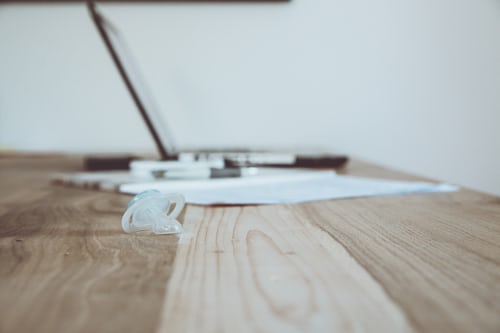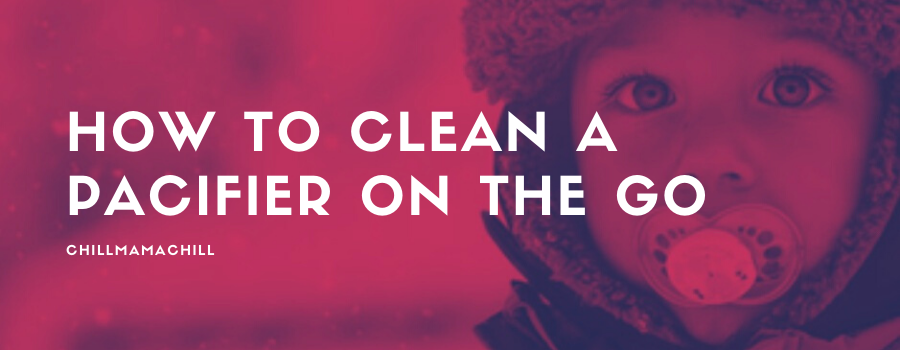As a young child’s mum, you’ll never leave home without your baby’s binky. It’s an essential accessory that helps placate, calm, and even soothes your tot to sleep. As such, you have to know how to clean a pacifier on the go when your kid’s dummy hits the car, mall or street, or restaurant floor.
Once you have sterilized your baby’s binky, it can go all day with topical cleaning. Take along some pacifier wipes, or use warm water and soap to clean your baby’s dummy while on the move. A little breast milk on the paci or even licking it with your tongue is sufficient to protect your child.
It makes sense to have more than one pacifier for when you and your baby are out and about. There could be one for the stroller, another in your diaper bag, and one on the car seat. Continue reading to find out how to clean your child’s binky when you’re away from home.
Should I Clean My Child’s Pacifier If It Has Touched the Ground a Split Second?
It’s hectic to take care of a child, and sometimes you’ll be tempted to cut corners instead of facing up to the whole nine yards. A dropped pacifier while you are out and about spells hygiene doom. Most of the time, and despite your physical location, wiping it off and then popping it back into your baby’s mouth won’t cut it.
Your child’s immune system is yet to develop fully. Therefore, they must be protected from germs until their antibodies mature. Proper cleaning and sterilization of your baby’s binky are vital if you’re to keep them safe and healthy.
There are good and bad bacteria. According to science, your baby needs a measured dose of each if their immune system is to develop properly. It’s when there’s too much of either that your baby’s fledgling immunity is in trouble. So, it depends on where your child’s pacifier fell, and in what condition it was in at that time.
Dry things collect fewer germs than wet ones when they hit the ground. Where the binky lands also matter, since the sidewalk is cleaner than the supermarket isle, according to researchers. That’s because such indoor places have come into contact with food bacteria, which causes gastrointestinal problems.
What Sort of Germs Can My Baby’s Dropped Binky Collect?
Traditionally, it was okay for mums to lick their child’s pacifiers clean. Old folks claimed a ‘five-second rule’ within which germs weren’t aware enough to inhabit the fallen binky. I guess that was before everyone fully understood microbes, and the body’s ability to fend them off.
According to Dr. Michael Roizen of the Cleveland clinic, a pacifier comes into contact with about 10,000 harmful bacteria, which are enough to make your baby sick. That’s especially true if your tot is less than six months old. Older kids have more developed immunity, and your child can fight these off without as much as a fever.
Picking up such a binky and running it under a faucet of cold water significantly reduces bacterial numbers. The doctor says they can drop to as little as 1,000 which in microbe terms is next to nothing. However, sticking the pacifier into your mouth adds to the number of bacteria, a risk to younger kids and those with compromised immunities.

There’s evidence uncovered that you can pass allergy combating antibodies through saliva. So, it’s up to you to weigh that against the risk of communicable viruses and bacteria. Oh, and another thing the doctor admonished against is putting hand sanitizer on the binky. Or dental mouth-wash, seeing as these are chemicals based on alcohol, not something you’d want your baby to consume.
Which Is the Best Method of Cleaning a Pacifier on the Go?
So, your baby’s drool-covered binky just hit the floor, and there’s no sink or microwave nearby. Let’s also assume you have no bottled water, or that your child is screaming blue murder for their binky. Strangely when your tot sees the grimy pacifier they’ve spat, and you’ve picked up, it’s when they want it the most.
If you were at home, you would immediately clean and sterilize the binky, but on the go, that’s a different scenario. Could be you’re strolling in the park, shopping, driving, or sitting at a restaurant where staff isn’t that helpful. You can save the day with pacifier wipes, or any clean paper towel.
Paci wipes take up less space than another pacifier in your diaper bag. You’ll be able to clean and disinfect your baby’s binky in seconds, wiping it over and giving it back before your little cry monster explodes. Due to FDA-approved food-grade ingredients, these can safely go into your child’s mouth.
Avoid using regular baby wipes as they contain toiletry chemicals. But with a pacifier wipe, you can also clean anything else that goes into your tot’s mouth. That includes all the things your child likes to chew, gum, and then throw about, such as teething toys, bottle nipples, or feeding spoons.
When There’s No Pacifier Wipes, Towels, or Anything Else to Clean a Dirty Pacifier
So you don’t have pacifier wipes, or any other cleaner, and your baby’s binky isn’t all that gross. Here’s where it gets elliptical as you can clean your child’s dummy using a dab or breast milk. It’s also been proven by researchers that licking pacifiers to clean them isn’t all that bad. But that’s not to say that when it lands in a puddle on the street you can go ahead and pop it into your mouth.
The logic behind using your bodily fluids to clean your child’s pacifier isn’t that farfetched either. Babies that develop asthma, eczema, or respiratory allergic reactions lack harmless bacteria that boost their immunity. Your saliva is also laden with natural digestive enzymes, which can do a passable job at eliminating fungal or microbial components that have attached themselves to a fallen binky.
Stimulation of your baby’s immune system aside, it’s best that you don’t lick or use breast milk to clean your child’s pacifier more than once. That’s because microbes quickly form resistances, growing within a biofilm to overpower whatever enzymes your bodily fluids can offer.
Conclusion
In many urgent situations, hot soap-less water, or even cold when there’s no alternative, remains the most effective medium of cleaning a pacifier on the go. If your baby is less than three months old, make sure you sterilize their binky at least once daily, even with regular topical washes. Throw out a dummy used for between four and six weeks and always check for material damage once you’ve cleaned it.

I’m Cathrine and I’m a 39-year-old mother of 3 from Utica, New York. And I’m extremely happy you’ve come to visit my hide-out on the web. Here I post about everything related to family-life and usually it will involve babies and lessons I’ve learned over the years from experts, friends, and my own mistakes. So hopefully you will find what i write fun and informational!


